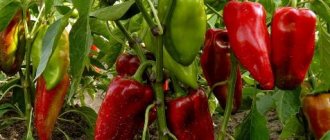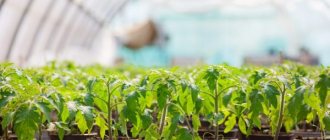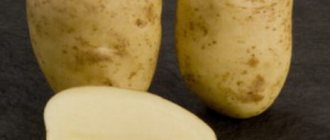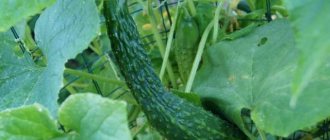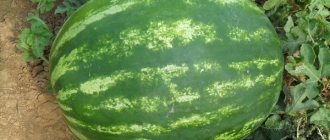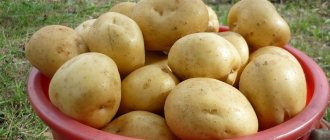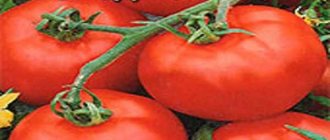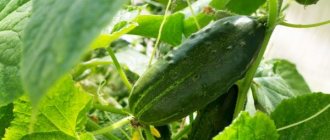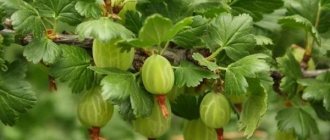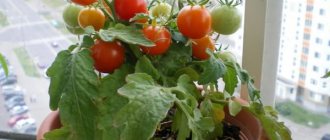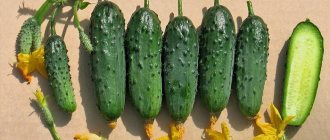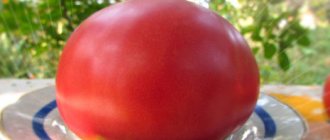Onion sets: description and choice of variety
Onion set is the name of the planting material of ordinary onion, and not its variety. Onions are known to people for their beneficial and healing properties; since ancient times, our ancestors grew them on their lands, believed in their magical properties and treated diseases with them.
Nowadays, onions are an indispensable product in cooking, and the ability to grow them yourself is a blessing for a gardener. It is important to plant the seedlings correctly and care for them, knowing some of the subtleties.
Varieties, their description and characteristics
There are many varieties that are suitable for growing sets at home. Before selection, the best of them passed all types of tests on growing in difficult conditions.
How to choose varietal onion sets with a description by type?
Hercules (aka Gulliver or Hercules)
Hercules (Gulliver) is a very prolific onion variety (up to 7 kg can be harvested from 1 sq. m.). Through long selection, this onion variety was developed from an ordinary Dutch onion. With proper care, it has a long shelf life, fast ripening and is resistant to pests.
Snowball
Snowball, or Snowball, is a white variety that has a not too strong taste and is used for making salads. The characteristics of the fruit are as follows: white pulp, which is grown everywhere, because... The variety is unpretentious to temperature conditions. You can store the fruits until spring.
Strigunovsky local
Another variety of onion sets that is unpretentious to climatic conditions. It can be grown in both arid and humid climates. Everywhere Strigunovsky is eaten raw and added to various dishes during the cooking process.
Turbo
Large bulbs require fertile soils. The shelf life of the Turbo variety is approximately 6-8 months. It is more often used for preparing some dishes; it is rarely used raw and on greens due to its strong taste. It is recommended to dig up the bulbs after the “tail” has completely dried out.
Troy is an early maturing, semi-sharp (but not pungent) variety. Its yield is up to 5 kg per 1 sq. m. Not susceptible to diseases typical of onion crops.
Helenas
Helenas is classified as mid-early. It has white-green flesh and is often eaten raw. Disadvantages: instability to temperature changes and short shelf life (up to six months).
Senshui
Senshui is a frost-resistant (down to -15°C) variety obtained by the Japanese during selection. Used for food and preservation. It has an early ripening period and a long shelf life.
Elan is an early ripening variety. When cut, it does not cause tears, therefore it is widely used in cooking and is approved for use by people with gastrointestinal problems.
Setton
Setton is one of the most popular varieties and is resistant to bolting. It has a sharp taste, early ripening, and a long shelf life (up to 7 months). Suitable for both professional and amateur cultivation of sets.
Rumba
Rumba is characterized by medium ripening, pungent taste and white flesh enclosed in yellow-brown scales. The low yield (from 3.5 to 5 kg per 1 sq. m) does not allow it to be used as a winter reserve, but for feathers it is the best choice.
Shakespeare
Shakespeare is an early ripening winter onion variety. The white pulp has a semi-sharp taste. The vegetable is resistant to diseases and pests, and also tolerates low temperatures (down to -18°C). In demand because has large heads and good qualities.
Glad stone
Stone has a sweet taste. Long shelf life, unpretentiousness to climatic conditions and resistance to bolting make Gladstone an indispensable variety among its competitors. It can be sown in early spring and mid-summer.
Corrado
Corado ripens early, the type of planting is tape. The scales are dense and the flesh is white. The bulb is flat-rounded, sometimes slightly elongated upward. This variety has a long shelf life, until a new harvest. The vegetable is distinguished by its average bulb weight and frost resistance, the ability to transplant to seeds, and it is also not eaten by pests.
Rosanna (Rossana)
Rossana, also known as Rosanna, is a long-lasting, but not frost-resistant variety. Its scales are red with yellow splashes, the flesh is dense and sweet. This vegetable is highly resistant to bolting, pests and onion diseases.
Shetana
Shetana, or Shatana, is characterized by medium ripening and fertility (up to 5 kg), as well as low frost resistance and resistance to bolting and various pests and diseases. It is characterized by a rounded shape, golden scales and juicy white flesh.
Lyubchik
Lyubchik has an elongated oval-shaped bulb. It is also characterized by excellent shelf life (up to 7-8 months) and excellent taste. The bulbs are used in cooking and canning.
Electrician
Electric is a mid-season variety of red onion. It is characterized by a sweet, spicy taste and is used mainly in salads. Suitable for growing in cold periods and tolerates frost well.
Radar
Radar belongs to the winter mid-season varieties, has high cold resistance and dense external and internal scales. The latter ensures long shelf life (7-8 months, which is not typical for winter crops).
Description and characteristics of the bow
In terms of external characteristics, Helenas onions are not much different from other varieties of the crop. But this variety is characterized by earlier ripening, high yields and ease of care. All this makes it quite popular among gardeners, despite the unsatisfactory keeping quality of the bulbs. Read more about the main characteristics of the variety later in the article.
Botanical description
Helenas onion is a hybrid variety. It was developed in the Netherlands in 2009 and is quickly gaining popularity among gardeners. Plants consist of an above-ground part and an underground tuber located in the upper layers of the soil. The rest of the article provides a separate description of each of these parts, as well as characteristics of the set.
Did you know? Fresh onion juice applied to the site of a bee or bumblebee sting helps to quickly relieve swelling and eliminate pain.
Pera
The Helenas onion variety is usually grown by gardeners to produce turnips, but its green leaves can also be eaten. The main features of the appearance of the feathers of plants of this variety are listed below:
- leaves are tubular, with moderately thick walls;
- the ground part of the plant is colored rich green;
- a thin layer of waxy coating is visible on the feathers;
- each new leaf grows inside the other, forming the neck of the bulb;
- a new onion feather grows every 7 days;
- at the end of June the plant produces a long (about 1 m) peduncle with a spherical inflorescence.
Sevka
Sets are small bulbs that are grown from seeds in the first year of plant cultivation. In the future, they are used again for planting, but they already grow into a full-fledged large onion that can be used for food.
Planting and sowing
For a better harvest, it is recommended to grow onion sets yourself from seeds (seeder). First, you need to choose the right place for sowing “chernushka”. The most favorable are considered to be beds where potatoes, tomatoes, cucumbers or cabbage previously grew. It is these predecessors that save different types of onions from vitamin deficiency.
- In order to reduce the risk of damage to the seedlings by pests, you should not plant them in the same place for several years. The earth needs rest.
- The place for sowing the seedlings should be chosen on the sunny side, where the beds will receive a sufficient amount of light. The soil at the planting site must be fertile, otherwise the feather will germinate poorly.
- The soil must be properly prepared before planting: cleared of weeds and dug up. Before this, during the fall, the soil should be fertilized with potassium and phosphorus fertilizers, compost and rotted manure. It is strictly not recommended to use fresh manure, because when it is used as fertilizer in the second half of plant growth, the growth of feathers, rather than the bulb, is enhanced. If the soil that was chosen for planting is highly acidic, it must be treated with lime.
- The right time for sowing is at the end of April and the first days of March.
- After the cold weather subsides, the seeds should be prepared for planting. To do this, they need to be soaked in a damp cloth or water for a day (24 hours) or until the first shoots appear. This promotes better germination. After soaking, the seeds should be dried in a shady place. Finally, there must be seed treatment with agents against diseases and pests (neck rot and onion fly).
- Make shallow grooves (up to 2 cm) in the dug up soil and water them. It is important to maintain the correct distance between rows of seeds (from 8 to 13 cm). Seeds must be placed at a distance of 5 mm to 2 cm.
- It is necessary to properly care for the crop: fertilize it and water it in the first half of growth. If the soil where the sowing was done is fertile, additional fertilizing is not required. A month before harvest, watering must be stopped.
- After harvesting, it is important to sort the bulbs by size (sorting is an important process) and hang them in a nylon in a warm (18 to 22°C) and dry room.
Growing onions from sets does not require special skills, everything is within the limits of primitive knowledge about the garden. Next season, the already prepared planting material must be planted in the ground. You can skip the first stage and buy ready-made onion sets, but preparing planting material yourself is always of much better quality and gives a larger harvest in the end.
Ready-made onion sets (planters) are sown in spring or autumn. The stages of planting and caring for plants are not too different from the care of sowing described above.
Features of planting and growing
The quality of the harvest depends on how correctly the seed was prepared and planted in the ground in a timely manner.
One of the main advantages of this hybrid is the ability to grow from sets and seeds.
Preparing for landing
A week before sowing, the seeds are soaked for 24 hours in a solution of potassium permanganate until they swell , then they are laid out on a damp cloth and left to germinate in a bright room at a temperature of +20...+25°C, making sure that the cloth remains damp. Before sowing, they are dried at room temperature for half an hour.
Reference. Many farmers, instead of germinating, soak the seeds for 18-20 hours in a growth stimulant solution.
The soil mixture for growing seedlings is made from equal parts of sand, soil from the garden, peat and compost. To disinfect the finished substrate, it is spilled with a fungicide solution or calcined.
Before planting, the seedlings are heated for 8 hours at a temperature of +35°C , and then the upper part is cut off along the neck line to speed up the emergence of seedlings.
In autumn, plant remains are removed from the site, the soil is dug up 30 cm deep and humus is added. In the spring, they dig again and enrich the soil with superphosphate, ammonium nitrate and potassium salt.
Soil requirements
The soil should be loose, nutritious, with weak or neutral acidity and good moisture and air permeability.
Dates, scheme and rules of planting
The time for sowing seeds for seedlings depends on the climate of the region. If it is early spring in the region, sowing is carried out in the second half of February, in other regions - in mid-March.
The process of growing seedlings:
- Pour the soil mixture into the prepared containers and make furrows 1 cm deep in it every 5-6 cm.
- Place seeds in the furrows at 3 cm intervals.
- Sprinkle them with soil and water lightly.
- Cover the container with polyethylene and put it in a bright place with a temperature of +20...+25°C.
- When shoots appear, remove the polyethylene and reduce the room temperature to +16...+20°C.
- After 3 weeks, water the seedlings with mineral fertilizers, repeat the procedure after 10 days.
Seedlings are planted in open ground 2 months after emergence . In the south this is the end of April, in other regions it is mid-May.
Instructions for planting seedlings:
- Make furrows 1-2 cm deep in the area, maintaining a distance between them of 25-30 cm.
- Lightly moisten the soil along the furrows.
- Place the seedlings in the furrows at a distance of 5 cm from each other, sprinkle with soil and water.
- Mulch the beds with peat.
Sevok is planted in the ground at the end of April or beginning of May. In areas with moderately cold winters, winter Helenas onion sets can be planted in late October or early November.
Important! During winter planting, the air temperature should not exceed +5°C.
Set planting scheme:
- Mark rows on the site at a distance of 20-25 cm from each other.
- Every 5-8 cm, dig planting holes 3-4 cm deep.
- Place an onion in each hole, cut side up.
- Cover the holes with soil and tamp lightly.
The beds are watered in the spring and mulched in the fall.
Nuances of care
Onions are grown in a well-lit area where moisture does not accumulate, so it is better to choose places on the plain or hills.
Helenas should not be planted after garlic and carrots. The best predecessors for it are legumes, cabbage, tomatoes, cucumbers, and potatoes.
Reference. The optimal air temperature for crop development is +20…+25°C.
When caring for plants, it is necessary to follow the rules of watering, loosening and weeding the soil, as well as timely apply fertilizers and treat plantings from pests and diseases.
Watering mode
The hybrid does not tolerate drought and excessive moisture , so when watering the main thing is regularity and moderation.
During active growth, plantings are watered every 3-4 days, during the period of bulb formation - weekly, focusing on the condition of the top layer of soil. 20 days before harvesting, watering is stopped so that the bulbs have time to dry and are better stored.
Loosening the soil and weeding
The ground is weeded as weeds grow , which shade the sprouts and take moisture and nutrients from the soil.
Loosen the soil to a depth of 2-3 cm after each watering . The procedure helps to get rid of the dense crust on the soil surface and improve the access of oxygen and moisture to the roots.
Top dressing
Fertilizers are applied according to the scheme:
- 14 days after emergence - diluted bird droppings (1 kg per 15 liters of water);
- during the formation of bulbs - 10 g of potassium chloride and superphosphate per 1 m².
Disease and pest control
Despite good immunity, if planting and care rules are not followed, plants can be affected by diseases and pests, so it is important to know how to deal with them:
- onion flies - remove the affected parts of the plants, dust the beds with tobacco dust and lime, and in case of severe infestation, treat with the insecticides "Aktara", "Corado" or "Vantex";
- onion mites - scatter a mixture of tobacco and ash between the rows, treat the plantings with Nugor, Fostran or Kemidim;
- peronosporosis and gray rot - get rid of infected plants, and treat the remaining ones with fungicides “Quadris”, “Ridomil Gold”.
Difficulties in growing
Some problems may arise when cultivating Helenas onions :
- poor seed germination as a result of sowing without prior preparation;
- rotting of bulbs due to excessive moisture;
- poor growth and weak development of bulbs, damage by diseases and pests if crop rotation rules are not followed.
Is it worth growing Helenas onions in your garden?
Onion Helenas F1, Dutch selection, is a 1st generation hybrid. This is a heterotic hybrid, which received its excellent qualities from the best representatives of ordinary varieties.
Helenas is a mid-early variety, its bulbs form on average in 3-3.5 months. The color of its juicy scales is white with a green tint, the upper (dry) scales are golden-bronze. Helenas is a low-germinating variety and produces 1 bulb. Its neck is of medium thickness (the thinner the neck, the longer the shelf life). The bulbs are dense, round in shape, and have a semi-sharp taste.
Reviews
Reviews from gardeners confirm the positive characteristics of the hybrid.
Marina, Volsk : “I have been growing Helenas for 3 years.
The first time I bought seeds and sowed them for seedlings, but then I didn’t want to bother with it and started buying ready-made seedlings. I like everything - the yield is good, the bulbs are large and beautiful. The only thing that onions lack is resistance to temperature fluctuations.” Vasily, Saratov region. : “I saw a photo and read a description of the Helenas onion variety on the Internet, and heard about it for a long time, but somehow I never got around to planting it. I started growing it last year. I was pleased with the result - the bulbs grew on average 120-150 g, the harvest was rich, it lay in the cellar for 4 months, then some of the bulbs began to deteriorate.”
Description of the variety and rules for its cultivation
The advantages of the variety include the following:
- This is an early variety and can be eaten as early as mid-summer.
- The fruits are medium and large in size (their weight is 100-160 g).
- The variety is disease resistant and easy to care for.
- The hybrid has a high yield - 400-600 c/ha. In the Volgograd region, the maximum yield was recorded - almost 1000 c/ha.
- By the time of harvesting, 90% of the crop is ripe. After ripening, the remaining 10% ripen.
The disadvantages include the fact that the Helenas variety does not have a maximum shelf life (it is stored for about six months) and is susceptible to temperature changes. It is also bad that it cannot be grown for seeds, because its positive qualities will either not be passed on to the next generation at all, or not in full.Helenas is suitable for cultivation in the following ways:
From seed to turnip in one season. They begin sowing when the night frosts stop.
In general, the Dutch selection is characterized by high seed germination, but it should be borne in mind that with each subsequent year of storage, onion seeds gradually lose their vigor.
- By seedling method.
- From sevka. The optimal planting time is from the end of April, when consistently warm weather sets in.
Seeds take quite a long time to germinate. To speed up the process of seed germination, you need to pre-treat them. To do this, they are soaked in a strong solution of potassium permanganate, then dried. Growth stimulants can be used.In order for the shoots to be friendly and the bulb to form faster, onion sets of the Helenas hybrid are cut along the neck line or 1/3 of the bulb is cut off before planting.
Description of the variety
The Helenas variety is grown for turnips. Onions are large and have a moderately pungent taste. The plant is universal; when growing, green feathers are used. The leaves grow up to 16 cm in length, have a bitter taste, and have a rich green color. Greenery grows every 7 days:
- round turnip. The outer protective shells are brown in color. The pulp is represented by juicy, voluminous scales. Their color is light with green veins;
- the weight of the Helenas onion is 170 g. According to the description of the variety by the producers, the crop is characterized by high yield. According to reviews from plant growers, root crops grow larger. Their weight often exceeds 250 g;
- average yield 6 kg/m2. Record onion production was noted in the Volgograd region, 9.8 kg/m2;
- unpretentious culture. It tolerates drought well, but plants must be protected from sudden temperature changes and frost;
- Helenas onions have good immunity. It is resistant to downy mildew and bacteriological diseases. It is recommended to take preventive measures against fungal infections.
Sandy and loamy soils are suitable for the crop. If the soil is heavy, it is recommended to add sand or peat. Sandy soils are enriched with rotted compost. To prevent the development of fungus in the soil, use ash, 1 kg/m2. From insects, “Nitrophoska” is added to the soil.
Onions began to be cultivated more than 5 thousand years ago. Currently, the largest amount of root vegetables is consumed in Libya. There are 33 kg per inhabitant per year. Senegal ranks second in onion consumption. England and France shared 3-4 places. Every year, each resident of these countries eats up to 10 kg of root vegetables.
These events are carried out during autumn work. In spring, it is recommended to use mineral nitrate fertilizers: urea, potassium nitrate. I sprinkle the preparations onto moist soil and harrow.
More on the topic: How is onion forcing done?
Rules for caring for vegetables
Caring for Helenas onions involves carrying out the following agrotechnical measures:
weeding and loosening the soil;
Weeding the beds and loosening the soil should be carried out regularly throughout the growing season. It is necessary to begin carrying out these activities before the emergence of seedlings. Weeds interfere with the growth of the vegetable due to its weak root system. This is especially true for growing from seeds or seedlings.
If the bulbs grow among weeds, they will develop a thick neck, and the vegetable will not be stored well. In addition, weeds contribute to the occurrence of various diseases.
Weeding is done as the weeds grow, and loosening is done after each rain or watering. It is very important to rake the soil away from the onion neck while loosening and weeding. It has been noticed that the bulb ripens faster if its upper part is above the ground.
Harvest and storage
Onions are stored well only if they are harvested in a timely manner.
How and when to collect
The harvest is harvested 10-14 days after the feathers have turned yellow and died . When planting in spring, onions ripen at the end of summer, and when planting in autumn, in the second ten days of July.
The bulbs are carefully dug up 10 cm from the neck and pulled out of the ground by the leaves.
Storage features and shelf life
The dug up bulbs are manually cleaned of soil, sorted and all specimens with mechanical damage or signs of rot are removed.
The harvest is dried in the sun or under a canopy for 2-3 days , placing the leaves in one direction, and then the above-ground part is cut off.
Store onions in cardboard or wooden boxes with holes for ventilation . The storage room must have good ventilation, humidity within 70-80% and air temperature +4°C. In such conditions, Helenas is stored for 4-6 months.
Description of varieties of winter onions
Winter onions include the following varieties:
Good winter radar
This variety of onions has gained popularity due to its ease of care and excellent wintering in open ground. The bulbs reach large sizes after ripening.
The radar is frost-resistant. The sub-zero temperature that this variety can withstand depends entirely on the thickness of the snow cover on the soil. If the thickness of the snow layer is quite high, it feels good down to -23 degrees. If the winter is not snowy, then the bulb’s preservation ability will be maintained down to -15 degrees.
This dependence on temperature is inherent in all varieties.
This variety is not capable of producing arrows. The bulbs are very resistant to all kinds of diseases and insect attacks. In order to achieve a good harvest with huge bulbs, you need to plant and care for it correctly.
The average onion weighs up to 150 g. And growing such a large harvest will not be a hassle. In some cases, there are fruits that weigh about 300 g.
Due to the fact that the scales of the Radar onion have a high density, this facilitates long-term storage.
Shakespeare
This variety of winter onion has excellent advantages. The majority of gardeners prefer to grow Shakespeare.
It has higher frost resistance than the Radar variety. In the complete absence of snow cover on the ground, it winters well down to -18 degrees or more.
The bulbs of this variety are very large, on average one bulb weighs 100 g. The shape of the bulb is round, the flesh itself is white and quite dense.
Centurion
This variety is also quite popular among winter onion varieties. The shape of the bulb is round and slightly elongated. The main advantage of this variety can be safely noted for its long storage. Subject to the minimum storage rules, the aging period reaches 8 months, retaining its full taste.
It is also worth noting that the Centurion does not have the ability to shoot arrows. Ripe bulbs reach 110-160 g. The high yield of the variety is also striking.
Senshui
Senshui is no less popular among winter onion varieties. It not only has good yield, but also quite early ripening. The bulb itself is shrouded in dense scales.
Mostly the bulb has a more round shape, but flat shapes can also be found. If storage standards are observed, this variety retains its properties and quality for up to 6 months. Doesn't shoot arrows.
Senshui onion has been noted to be resistant to diseases and insect attacks.
Stuttgarten Risen
This onion variety was bred by German breeders. The scales are yellow and slightly brownish. But you can also find white bulbs. The shape of the fruit is round.
The main advantage of the Stuttgarten Riesen selection is its huge size. On average, one onion weighs 100-150 g, but sometimes the weight of one unit reaches 250 g. It has a long shelf life.
The Stuttgarten Rieser onion variety contains a record amount of vitamin C.
Struton
This onion variety has an excellent and pronounced taste that cannot be confused with any other variety. The shape of the bulb is oval, wrapped in dry scales. Onion scales are golden brown. This type of onion is also distinguished by its size. The average weight of one unit will be around 180 g.
It is highly resistant to all kinds of diseases and pests. If storage standards are observed, Struton can be aged for up to 8 months without loss of taste and quality of the product.
Keep Well
This onion variety has recently gained great popularity among gardeners. Translated from English it sounds like “well stored.”
This variety is not afraid of insect attacks (onion fly, onion nematode) and most diseases. The shape of the bulb is oblong and weighs on average 100-150 g.
Description of the hybrid
Helenas is a first generation heterotic hybrid . Suitable for fresh consumption and as an additive to various dishes, as well as for canning.
Origin and development
Helenas onion was bred in 2009 in the Netherlands , the originator is the company ENZA ZADEN BEHEER BV
It was included in the State Register of Russia in 2011.
Chemical composition, trace elements, vitamins and beneficial properties
Onion Helenas contains:
- vitamins A, C, PP and group B;
- essential oils;
- phytoncides;
- iron;
- potassium;
- carotene;
- zinc.
The vegetable prevents vitamin deficiency and strengthens the immune system, destroys microbes, increases hemoglobin, supports the functioning of the cardiovascular system, speeds up metabolism, and helps remove toxins from the body.
Ripening time and yield
This is a mid-early ripening hybrid. Bulbs are formed within 90-105 days .
The marketable yield of Helenas is 434-601 c/ha.
Reference. The maximum yield was recorded in the Volgograd region - 982 c/ha.
Disease resistance
The hybrid is immune to diseases, but only with proper care. In case of sudden temperature changes, the risk of developing fungal infections increases.
Characteristics of the bulb, description of appearance, taste
Onion Helenas has tubular leaves of a rich green color , covered with a thin layer of waxy coating. The bulbs are round, weigh on average 100-170 g, covered with dark brown husk. The pulp is white with a greenish tint, has a semi-sharp taste and a characteristic onion aroma.
Growing regions and climate requirements
The hybrid is included in the State Register for the Lower Volga region, but due to its unpretentiousness to climatic conditions, it is successfully cultivated in other areas.
Beneficial features
Winter onions, just like regular onions, have many useful qualities. It is very often used in folk medicine, both for treatment and as a prevention of various diseases. Each onion variety contains its own vitamin composition.
I would like to consider the nine most useful qualities of onions, which unite almost all varieties:
- Onions are a kind of natural antibiotic . The phytoncides contained in the bulb help in the fight against sore throat and maintain normal upper respiratory tract. This substance also has a detrimental effect on a huge number of pathogens. Cutting an onion into pieces and snorting it several times a day can cure or prevent the flu. Vitamin C contained in onions can increase the level of the immune system, as well as rid the human body of vitamin deficiency.
- Onions also have an effect on blood formation and blood purification. It is a stimulant of the digestive system and helps remove excess moisture from the body. Onions are widely used in the treatment of cancer, thanks to the quercetin contained in onions. If you replace the tablet by inhaling onion juice, you can get rid of headaches.
- Juicy green onions provide excellent care for our skin. Onions have gained wide popularity in cosmetology. With it you can cleanse your face of unnecessary blemishes. Rubbing your face daily with a cut onion into two will get rid of freckles.
- Also in folk medicine, onions are known as a remedy for relieving inflammation. Flavanol contained in onions prevents cancer.
- Onions have remarkable disinfectant properties.
- The sugar content of onions exceeds the amount of sugar found in apples and pears. But those who are planning a diet should not give up this healthy delicacy. Because onions have fat burning properties. Among the large number of diets, there is an onion diet, in which you should eat onion soups daily.
- Onions can quickly relieve pain from a wasp sting. As soon as a wasp stings, you need to rub the sting site with a cut onion. You can also relieve pain from ear infections using onion juice. Using onion compresses can get rid of abscesses, inflammation and help wounds heal. Relieves pain due to rheumatism and swelling. In cosmetology, onions are used to strengthen the hair follicle of the head and against dandruff.
Reproduction
Not all varieties of winter onions can throw arrows with seeds. Therefore, propagation is carried out in two ways: with the help of arrows and by dividing the onion bush, depending on the variety:
- Vegetative method . When dividing, many children grow near the mother bulb, which are subsequently used as planting material.
- Using seeds. When an onion bush shoots out an arrow with an inflorescence, the seeds are collected, processed and used as planting material. How to grow onion seeds is described in this article.
Like many seeds, onion seeds have almost 100% germination when stored for a year.
With each year of storage, the percentage of seed germination decreases. To check the quality of planting material, you need to pour them into a container of water. Those seeds that float are not suitable for planting.
Growing
The difference between winter onions and regular onions is that winter onions do not require a lot of light. But it is worth paying great attention to agricultural cultivation technology:
- Correct selection of varieties for planting before winter . Here it is necessary to take into account the climate characteristics of the region.
- The soil for winter varieties is sandy loam or loamy. Under no circumstances should the soil be acidified.
- Site selection. If the place where you plan to plant winter onions is occupied by other plants in the summer, it should be vacated before the end of July.
- Constant watering . This is necessary so that the first fruits are already in June.
- The place should be quite sunny . In winter, you need to think about keeping the area with planted onions constantly under snow.
In those regions where snow does not linger for long, it is worth covering the beds with agrofibre.
Planting onions: how to plant seeds, timing, technology
After removing the predecessor plants from the soil, the ground should be dug up and humus added. After this, you need to give about one month time for the soil to shrink before planting in winter.
Sowing in forest-steppe areas takes place approximately on August 10-15, and in steppe areas on August 25-30 . You should not plant before this time, as the number of arrows will increase in the spring.
Immediately before sowing the seeds in the ground, the garden should be watered and after the soil has dried slightly, the area should be loosened and leveled. The distance between the rows of onions should be 35-40 cm. The approximate seed consumption per linear meter of row is 35-40 viable seeds. The seeds are sown to a depth of 1.5-2 cm and the soil on top is slightly compacted. If August is sunny and hot, you should monitor watering, preventing the soil from drying out.
The first shoots can already be seen on days 18-20.
Onion sets: planting in open ground, characteristics of winter varieties
Onions are one of the most common garden crops. All its parts are used for food: both the feather and the bulb itself. To get a harvest you need to plant onion sets.
Gardeners in the middle zone begin choosing planting material in February. The peak of sales is observed in March. However, if you purchase it at this time, you need to provide conditions for its storage.
It is best to purchase planting material in April-May, but by then there is a risk of not finding the right varieties.
Variety Stuttgarter Reisen
Stuttgarter Reisen is a high-yielding variety. Lands in May . Ripening period - 70 days. With proper care, up to 8 kg can be collected per square meter of plantings. The weight of each bulb can reach up to 150 g. The pulp of this variety is white and juicy.
Its husk has a golden hue. This variety is especially popular in cooking.
It has excellent taste characteristics. This variety is also grown for greens.
It is recommended to plant onion sets of this variety no more often than every 5 cm. They should be buried 5 cm into the soil. A gap of 30 cm should be maintained between rows.
Hybrid Sturon
A mid-season variety, bred as a result of selection, brought to Russia from Europe. Gives large yields. The weight of the bulb varies from 150 to 180 g. The pulp is white with a pleasant aftertaste.
It is allowed to grow greens from bulbs at home on a windowsill at any time of the year. The greens are juicy , have a good taste, giving off a hint of spiciness.
Planting is recommended in late spring. After 100 days you can reap a wonderful harvest. Usually it is possible to collect up to 8 kg or more per square meter.
The bulbs are planted at a distance of 10 cm from each other. The seed should be buried 5 cm into the soil. There should be at least 30 cm between the rows. The harvest is stored in a well-ventilated area. It is necessary that the temperature in it does not exceed 20 degrees and does not fall below 15.
Red Baron
The variety is distinguished by red flesh and a slightly sweet taste. He is especially appreciated for:
- disease resistance;
- suitability for cultivation in all regions of Russia;
- possibility of long-term storage;
- good yield.
The Red Baron variety is planted in open ground in early May. After 95 days, the leaves will fall to the ground. This means the technical ripeness of the bulbs.
Marketable yield ranges from 6 to 8 kg per square meter. Red Baron has no analogues as a component of cold appetizers and additives to them.
Fruit melon pear pepino: all about the plant
Even on the windowsill, this hybrid shows excellent germination. It can supply fresh herbs almost all year round.
When planting, it is advisable to place the bulbs no closer than 10 cm from each other. The planting depth in the ground is 5 cm. Row spacing must be at least 30 cm.
Shallot Gourmet Golden and Red Sun
These varieties have much in common with onions. It has thin, tubular-shaped leaves. Their length varies from 20 to 40 cm. Their surface is covered with a coating of wax. The hybrid is characterized by intensive branching.
In the first year after planting, you can collect up to 12 bulbs from each nest. Their color can be yellow or purple. They come in different shapes. This is a very rudimentary vegetable, which is also resistant to cold weather. Even when the soil freezes, its ability to germinate remains.
Early maturing hybrid Centurion
Onions with excellent taste and high yield. among home garden owners due to several factors:
- good keeping quality during long-term storage;
- the period from planting to technical ripeness is only 60 days;
- excellent taste characteristics.
The weight of the bulb is from 100 to 150 g. The pulp is white and juicy.
There are other varieties of onions.
This is a multi-tiered, giant Exhibition bow, a decorative Suvorov bow, and so on.
Experienced gardeners recommend growing several varieties and not being afraid to experiment and try growing unfamiliar onion sets.
It is worth determining what is more important, the greens or the onion.
Based on this, you need to choose suitable planting material.
Features of cultivation
Onions can be grown in two ways: from seeds and using sets. In the first case, small bulbs grow in the first year. This is the same seedling that will produce a normal harvest in the second year.
Most gardeners prefer to purchase onion sets as planting material.
The best yields are produced by the following varieties:
- Supra;
- Strigunovsky local;
- Stuttgarten Reisen.
Stardust, Corrado, Rumb, Helenas, Chalcedony, Carmena, Rosanna - all these are hybrids that have become widespread in the middle zone of the Moscow region. Dutch varieties require little care and generally have slightly tangy flesh that leaves a sweet aftertaste.
Often, the owners of summer cottages themselves complicate the situation by resorting to various tricks. You should not experiment in the onion bed. The advice given on the Internet is not always correct.
For example, there is a recommendation for fertilizing onion beds with manure. It is important to point out one nuance here: it must be properly rotted. Its color should be almost black. This has been happening for 3 years.
Chives: features of planting and care, methods of cultivation
Fresh manure cannot be applied, otherwise the plants will start to get sick from it. You should not plant crops in the same area every year. The soil is deprived of valuable minerals, but old pests remain. It is better to plant bulbs where tomatoes or zucchini were grown last year. You can also do this on former potato plantations.
It is important to know that onions:
- does not like clay and sandy substrates;
- sensitive to acidity level:
- prefers well-lit areas.
Winter varieties of onion sets do not always provide good germination. More often you have to say goodbye to a certain part of the crops.
You can try planting several varieties at the same time, for example, Hercules onion sets, Rossana onions. Description of the variety and reviews will allow you to choose the most suitable option.
Alpha onions also produce a good harvest, which ripens quite quickly, in just 60 days. The vegetable stores well and provides an excellent harvest.
Domestic summer residents also like the Troy onion. Our summer residents give it 5 points out of 5. The hybrid consistently produces large yields. However, it requires strict adherence to the instructions when planting. This culture is very resistant to diseases and pests, and various types of stress.
Preparing the beds
Preparatory activities begin in September. Do not apply a large amount of fertilizer at once. It is enough to add half a bucket of humus per square meter. Mineral fertilizer can be used as a supplement.
Unlike garlic, onions are rarely planted before winter . Firstly, there are not many varieties suitable for such cultivation. Secondly, onions often freeze.
Thirdly, the size of winter onions is much smaller than those planted in the spring. In addition, if the heat comes too early, the harvest will be obtained in mid-summer. At the same time, its safety will be quite low.
It is unlikely that more than a third of the harvested onions will survive until mid-November.
How to make a potato digger with your own hands
As for the gardeners themselves, both experienced and beginners note in their reviews that growing onions from sets will not be difficult. It is important to choose the right variety and provide care.
Doing it right: caring for and planting winter varieties in the fall
After seedlings have appeared, you should regularly loosen the soil between the rows and remove weeds in a timely manner. Autumn is often rainy, but if there has been no rain for a long time, about 20 days, then you should water several times. Before wintering, it is worth checking the seedlings for diseases or damage by harmful insects. Downy mildew is the most common disease in autumn. In order to protect against this, you need to treat the seedlings with a fungicide, following the instructions given by the manufacturer.
Downy mildew is a very common disease of cucumbers. You can fight it with fermented milk products (kefir, milk), sodium silicate, soda and iodized solutions.
Before immediate wintering, the plant should have more than 4-5 feathers. To avoid freezing the plant and further pushing it out of the ground, before the onset of winter you need to hill up the bushes by 5-7 cm.
White agrofibre has recently gained wide popularity among gardeners. Black prevents the appearance of weeds and retains moisture in the soil in the summer. And white agrofibre serves as a blanket saving seedlings from severe frosts.
Onion Helenas: description and characteristics of the winter variety
Onion Helenas F1, Dutch selection, is a 1st generation hybrid.
This is a heterotic hybrid, which received its excellent qualities from the best representatives of ordinary varieties. Helenas is a mid-early variety, its bulbs form on average in 3-3.5 months. The color of its juicy scales is white with a green tint, the upper (dry) scales are golden-bronze. Helenas is a low-germinating variety and produces 1 bulb. Its neck is of medium thickness (the thinner the neck, the longer the shelf life). The bulbs are dense, round in shape, and have a semi-sharp taste.
Description of the variety and rules for its cultivation
The advantages of the variety include the following:
- This is an early variety and can be eaten as early as mid-summer.
- The fruits are medium and large in size (their weight is 100-160 g).
- The variety is disease resistant and easy to care for.
- The hybrid has a high yield - 400-600 c/ha. In the Volgograd region, the maximum yield was recorded - almost 1000 c/ha.
- By the time of harvesting, 90% of the crop is ripe. After ripening, the remaining 10% ripen.
The disadvantages include the fact that the Helenas variety does not have a maximum shelf life (it is stored for about six months) and is susceptible to temperature changes. It is also bad that it cannot be grown for seeds, because its positive qualities will either not be passed on to the next generation at all, or not in full.
Helenas is suitable for cultivation in the following ways:
- From seed to turnip in one season. They begin sowing when the night frosts stop.
In general, the Dutch selection is characterized by high seed germination, but it should be borne in mind that with each subsequent year of storage, onion seeds gradually lose their vigor.
- By seedling method.
- From sevka. The optimal planting time is from the end of April, when consistently warm weather sets in.
Seeds take quite a long time to germinate. To speed up the process of seed germination, you need to pre-treat them. To do this, they are soaked in a strong solution of potassium permanganate, then dried. Growth stimulants can be used.
In order for the shoots to be friendly and the bulb to form faster, onion sets of the Helenas hybrid are cut along the neck line or 1/3 of the bulb is cut off before planting.
Hybrid Helenas is not a winter variety, but it can be sown before winter, especially in regions where winters are not very severe. Since it is sensitive to temperature changes, special attention should be paid to the planting site. The growing area should have sandy or loamy soil, sunny, not shaded.
When growing the hybrid variety Helenas, you must adhere to the rules of crop rotation. You cannot grow onions in the same place.
The best predecessors are the following:
- legumes;
- cucumbers;
- potato;
- tomatoes;
- cabbage.
You can’t grow it after carrots or garlic, but it gets along well next to these vegetables. But it’s better not to plant them next to legumes. You can return to your previous landing site no earlier than after 3-4 years.
Rules for caring for vegetables
Caring for Helenas onions involves carrying out the following agrotechnical measures:
- weeding and loosening the soil;
- watering;
- feeding;
- If necessary, work is carried out to exterminate pests.
Weeding the beds and loosening the soil should be carried out regularly throughout the growing season. It is necessary to begin carrying out these activities before the emergence of seedlings. Weeds interfere with the growth of the vegetable due to its weak root system. This is especially true for growing from seeds or seedlings.
If the bulbs grow among weeds, they will develop a thick neck, and the vegetable will not be stored well. In addition, weeds contribute to the occurrence of various diseases.
Weeding is done as the weeds grow, and loosening is done after each rain or watering. It is very important to rake the soil away from the onion neck while loosening and weeding. It has been noticed that the bulb ripens faster if its upper part is above the ground.
Watering and fertilizing
The Helenas onion variety needs proper watering. It does not tolerate excess moisture, so it should be grown in areas where the ground dries out quickly after a rainfall of any intensity.
If the water in the ground does not stagnate, watering is done twice a week. Otherwise - as needed. When the bulbs are formed, the frequency of watering is halved and stopped 3 weeks before harvest.
Onion beds must be fertilized. Manure (humus) and bird droppings dissolved in water are used as organic matter. You can use mineral fertilizers. It is necessary to fertilize the soil in the fall, when the beds are being prepared.
The first feeding is carried out when the shoots appear, the next - when the bulbs have formed. It is better to add organic matter in the form of slurry. Mineral fertilizers can be applied in any form.
Harvesting
Helenas onions begin to be dug up when the feathers begin to turn yellow, the neck becomes soft and thin, causing the leaves to fall to the ground. From sandy soil, onions are easily pulled out by the leaves.
If the soil is dense, the beds are dug at a distance of 8-10 cm from the neck of the bulb. Remove the bulbs from the soil carefully so as not to damage them. You should not shake off the soil by hitting the bulbs against each other to avoid damaging the fruits. Remove earthen lumps with your hands.
At the same time, you need to sort and put aside damaged bulbs. The harvest is laid out in the sun (with leaves in one direction) and dried for several days. Then the leaves are cut off, leaving a neck up to 5 cm long.
The Helenas variety has more advantages than disadvantages, for which the State Register for Region 8 (Lower Volga) officially approved it for cultivation on private plots and farms.
Loading…
Source: https://agronomam.com/ovoshhi/luk/sorta-03/chto-takoe-luk-xelenas.html
